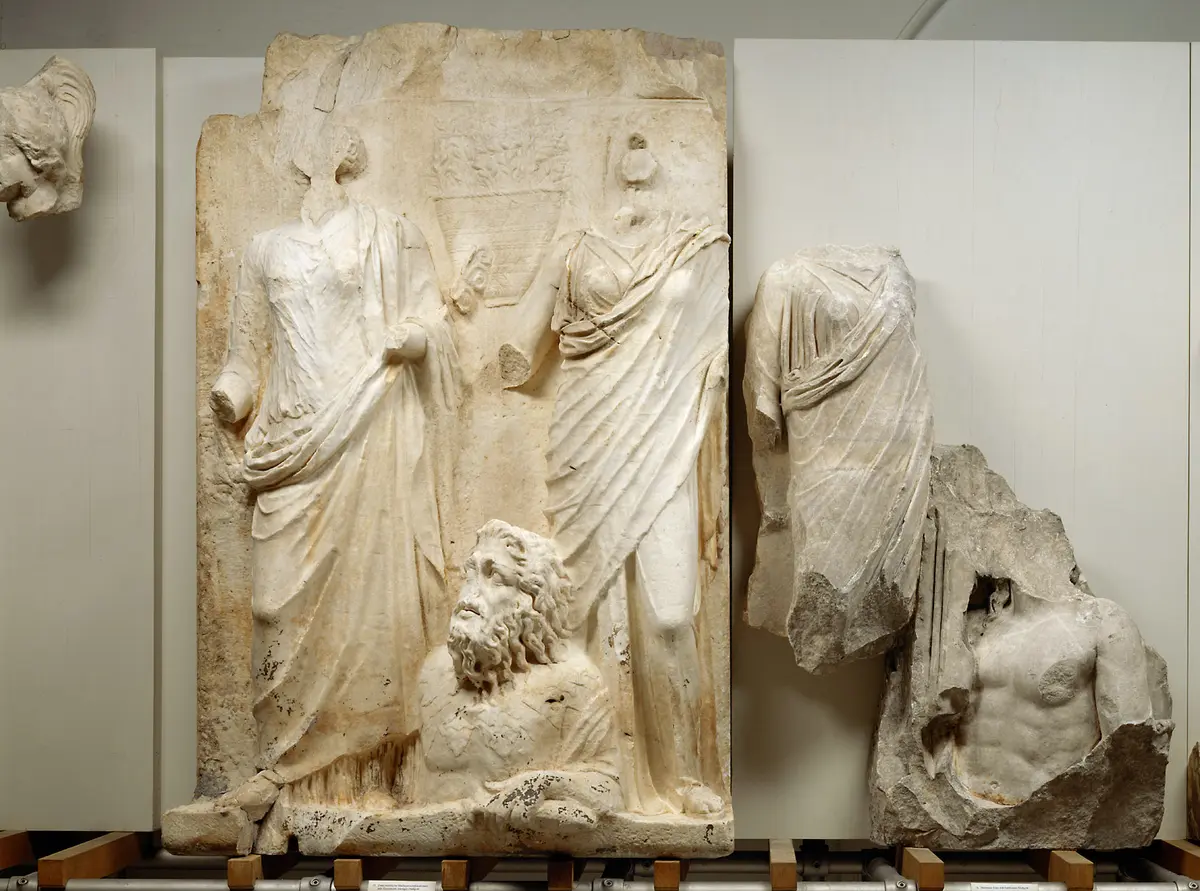Städtepersonifikationen
Aus dem Reliefzyklus des sog. Parthermonumentes ist nur diese eine Platte aus der Serie der Städtepersonifikationen in voller Größe erhalten. Sie zeigt zwei weibliche Figuren und zwischen ihnen am unteren Rand eine bärtige Flussgottheit. Die Benennung der dargestellten Städte (oder Regionen/Provinzen) kann nur aufgrund der beigestellten Attribute versucht werden. Der Korb mit den Ähren am Reliefgrund lässt an eine getreidereiche Gegend, etwa an Mesopotamien, denken. Das Attribut der linken Figur wurde als Schilfbündel oder als Aplustre (Schiffsverzierung) gedeutet.Die Schwierigkeit bei der eindeutigen Benennung solcher Figuren zeigt sich auch an Münzserien derselben Epoche, wo Personifikationen gleichen Aussehens und mit denselben Attributen durch Beischriften als unterschiedliche Provinzen ausgewiesen werden.
Title:
Städtepersonifikationen
Time:
Mitte 2. Jh. n. Chr.
Object Name:
Relief
Culture:
Römisch
:
Ephesos Celsusbibliothek Umgebung (Selçuk, Kleinasien, Türkei)
Material/technology:
Dolomit-Marmor
Dimensions:
H. 209 cm, B. 135 cm, D. 76 cm
Copyright:
Kunsthistorisches Museum Wien, Antikensammlung
Invs.:
Antikensammlung, I 860
Provenance:
Sultan, Abdul, Hamid, II.; Österreichische Ausgrabungen in Ephesos; Geschenk an Kaiser Franz Joseph; 1911 nachträglich inventarisiert
